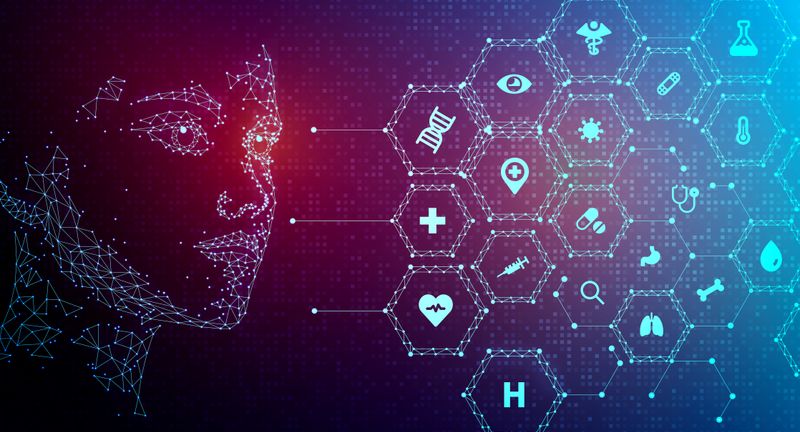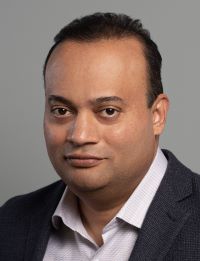
Artificial intelligence will not be writing this article … yet. The future is bright for AI in many settings, but the reality is that automation and machine learning have only scratched the surface of what they might accomplish down the road.
The biggest pharma companies in the world have for years been looking into how AI can help them discover drugs, find patients for clinical trials or understand biological pathways, among many other uses. And while all of these have been applied to some degree, the feasibility has been limited compared with the wild prophecies of a computer-driven future.
Pharma giant Pfizer said on its website that “in reality employing AI is less like building a mechanical overlord than it is like training a super-intern.” Still, Pfizer, Merck, AstraZeneca, Sanofi, Amgen and many more inked new deals with AI-driven companies in the first half of 2022 alone.
And the dealmaking isn’t just coming from Big Pharma — AI developers are also beginning to consolidate. For instance, Verseon, a clinical-stage company with its own AI drug discovery platform, recently bought AI dataset expert Edammo in October to bolster its own assets.
The truth is: Pharma investment in AI grew from less than $1 billion in 2015 to more than $7 billion in 2021, according to a report from life sciences consultancy McKinsey & Company.
So pharma companies are indeed buying into AI, but will it be a pillar of the industry’s future or an overhyped fad? That part is complicated, and there’s truth to both sides.
‘More shots on goal’ in discovery
High-throughput screening — in which many different potential drugs are tested at once in a lab — has been the way many drugs have been discovered to this day. But computer models led by AI that find the optimal molecular structure to fit disease-causing proteins have started to explore unknown lands in the drug discovery space.

Adityo Prakash, co-founder and CEO of Verseon explained that the concept has been around for a long time, but the technology is only just now becoming available.
“A drug molecule bonds to a human protein to form this perfect locking effect — but why can’t I, atom by atom, design the perfect binder?” Prakash said. “People have been talking about this since the 80s, and unfortunately, it’s a really hard problem — despite billions of dollars spent on this, it’s an expensive bottleneck.”
Without AI, the industry isn’t fishing in the whole ocean but rather in just a droplet, Prakash said. For instance, the largest companies in the world might have a library of about 2 million compounds to test with the aim of treating a disease, and across the industry, these libraries often overlap with “me too” compounds that aren’t that different from others.
“Across the industry, from Big Pharma to medicinal chemistry vendors to small biotechs, there are huge overlaps — even with small changes around the same molecule, we’re testing about 7 million distinct compounds,” Prakash said. “Is 7 million enough? In the known rules of organic chemistry — not even the new synthetic pathways we might find tomorrow — the number of possible drug molecules is a number with 33 zeros.”
With AI, it’s possible to systematically fish deeper into the ocean and through a more diverse group of molecules to find the right one for a certain disease. Verseon’s AI works with building blocks based on thousands of reaction rules to snap pieces together in what Prakash calls an unlimited supply of completely novel but drug-like and synthesizable compounds.
Using its platform, Verseon has brought a cardiovascular drug into early stage trials and has more than a dozen others in preclinical and optimization studies.
AI allows a company to take “more shots on goal” in their drug discovery program, Prakash said. A soccer team that has only a 2% success rate but is able to take 500 shots on goal will still be successful.
Moderating expectations
But AI is just a tool, he said. A means to an end. And often, platforms are overhyped because they are working with data that is only part of that droplet of water as opposed to the deeper ocean.
“AI in medicine is the latest, greatest buzzword that is easily swaying Big Pharma to invest,” Prakash said. “But AI needs a lot of data, and when AI is trained only on the data that’s available, maybe you can do something slightly faster or slightly cheaper, but you’re still operating under the same conditions.”
Prakash used the example of Tesla’s self-driving car woes. The cars can read a stop sign on the side of the road and obey— but if a construction worker is holding that stop sign in front of their face, the car has not necessarily been trained on that type of data, Prakash said. The same is true of many AI platforms.
“The hype has led to significant inflation and overvaluing and everything else,” Prakash said. “The ultimate problem is that, eventually, the unreasonable expectations are going to come back to reality, and that’s going to disappoint a lot of people.”
There are major success stories of drugs that are designed this way. One is Vertex Pharmaceuticals, a company launched in 1989 to “transform the way serious diseases are treated” using a computational discovery engine and which is now one of the biggest biotechs in the world based on blockbusters designed using the technology. It wasn’t AI per se, but the company became what it is today by betting on novel molecules.
For Prakash, drug discovery is still about a numbers game, and for that you need computers.
“There aren’t enough chemists in the world to make 200 million distinct chemical molecules in the next 200 years,” he said. “So the processes aren’t going to scale up — brute force won’t solve this problem.”
Beyond discovery into development
AI has begun to play a big part in some of the functions surrounding clinical trials, as well, said Uli Broedl, head of global clinical development and operations at Boehringer Ingelheim, one of the largest privately owned pharmaceutical companies in the world.
“AI is one key element of BI’s digital transformation because it allows us to automate certain processes,” Broedl said. “It allows us to predict how recruitment goes, what the best performing sites are, whether there could be a quality (issue) on the horizon, and the prediction would allow us to preemptively address this as opposed to risk-based monitoring.”
Clinical trial technology company Platform Life Sciences has a CEO who comes from the tech world. Michael Zimmerman brings an expertise in machine learning and analytics to clinical trial software and sees where the life sciences could learn from tech, especially when it comes to AI.
“The industry is ripe for disruption — compared with (the tech world), there is some speed to be gained and huge opportunity for machine learning and AI,” Zimmerman said. “However, 90% of machine learning and AI problems are getting the data, and getting clean data.”
Where AI can be of use in the near term is to create a control group in clinical trials. In a cancer study, for instance, it could be unethical to give half of the participants a placebo.
“One of the key use cases (I) see that is most exciting is digital twins, and using AI to create a digital clone that, based on historical data, can act as a control arm,” Zimmerman said. “And then multiple arms to augment a patient population.”
Platform Life Sciences is working on an AI protocol to predict when patients might be prone to long COVID.
Despite what AI can do already, sifting through the hype is a complicated task for those who can’t wait for the future to arrive.
For Verseon’s Prakash, resisting the temptation to oversell a platform is what will lead to the best outcomes for drugmakers and ultimately patients in the long term.
“There has already been some backpedaling happening among the people who are on the hype wagon, trying to temper expectations,” Prakash said. “To us, AI is just one of the many tools that you need — it’s a very hard job to do it right, to explore this uncharted ocean.”